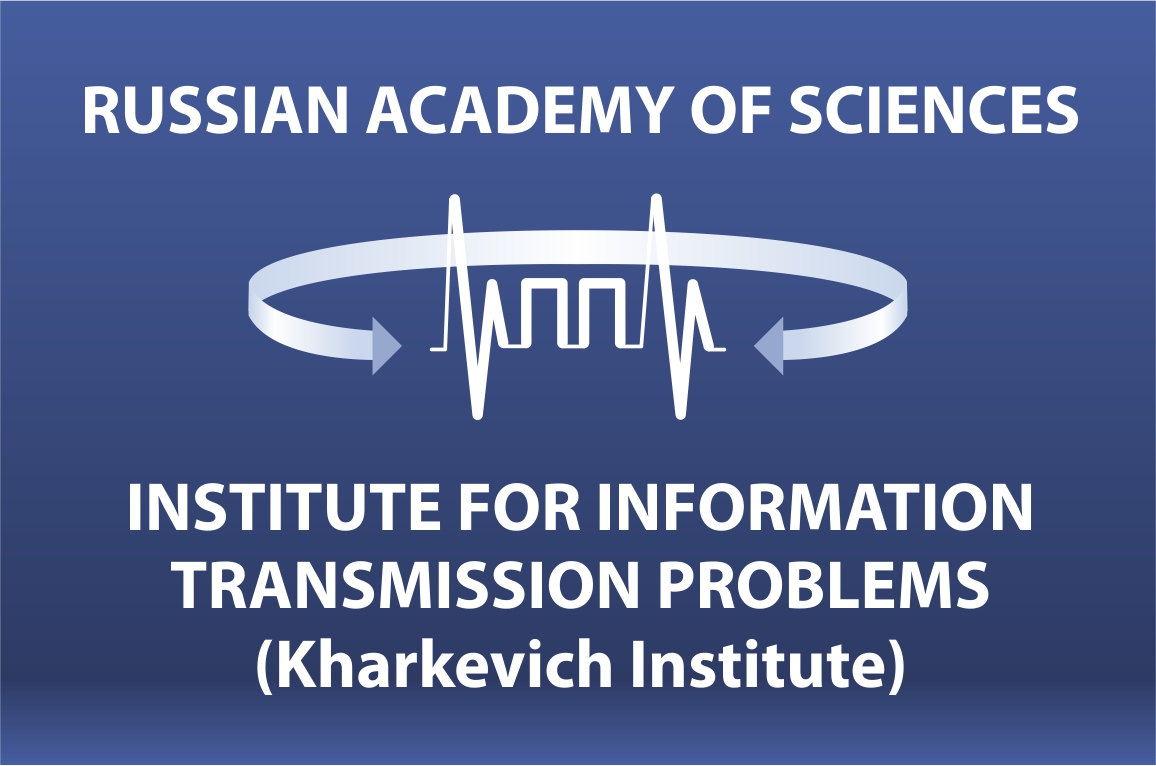>> Dobrushin Mathematics Laboratory Seminar >> Previous Seminars
September 21, 2010.
Speaker: A. Veretennikov.
September 14, 2010.
Speaker: A. Veretennikov.
September 2, 2010.
Speaker: Carlo Boldrighini (Rome).
August 31, 2010.
Speaker: A. Veretennikov.
August 26, 2010.
Speaker: Valentin Zagrebnov (Marseille)
August 24, 2010.
Speaker: A. Veretennikov.
August 19, 2010.
Valentin Zagrebnov (Marseille)
Title : "Non-Equilibrium Steady States (NESS)"
Abstract:
1. Definition of the NESS à la David Ruelle.
2. Simple example and the Landauer-Büttiker formula for stationary currents.
3. Where we are with the NESS actually?
August 17, 2010.
E.Lakshtanov, B.R. Vainberg
High Frequency Scattering by a Classically Invisible Body
We consider a polyhedron with zero classical resistance, i.e., a polyhedron invisible for an observer which rely only on geometrical optical rays. The corresponding wave problem (scattering of the plane wave by the polyhedron) is studied. The quasiclassic approximation is obtained and justified in the case of impedance boundary conditions with a non zero absorbing part. We show that the total momentum transmitted to the obstacle vanishes when the frequency goes to infinity, and that the total cross section oscillates at high frequencies. When impedance $lambda$ is real (there is no absorption), it is shown that there exists an increasing sequence of frequencies ${k_n}$ such that the average of the total cross section over interval $(lambda-varepsilon_n, lambda+varepsilon_n),~varepsilon_n ightarrow0,$ goes to zero.
August 5, 2010.
Konstantin Turicyn.
August 3, 2010.
Y.M. Suhov
July 27, 2010.
A. Puhal"skij
July 1 (Thursday) and July 6 (Tuesday), 2010.
Speaker: Irina Ignatiouk
"Martin boundary with large deviation technique for
partially homogeneous random random walks."
Abstract:
To identify the Martin boundary for a transient Markov chain having Green"s function G(x; y) one have to identify all possible limits of the Martin kernel K(x,y_n) = G(x; y_n)/G(x0; y_n) with y_n tending to infinity. For homogeneous random walks, these limits are usually obtained from the exact asymptotics of the Green function G(x; y). For non-homogeneous random walks, the exact asymptotics of the Green function is an extremely difficult problem. We discuss several examples of partially homogeneous random walks, where Martin boundary can be identi fied by using large deviation technique. The full Martin compacti fication is in general not homeomorphic to the "radial" compacti fication obtained by Ney and Spitzer for the homogeneous random walks in Z^d : convergence of a sequence of points y_n to a point of on the Martin boundary does not imply convergence of the sequence y_n/|y_n| on the unit sphere.
May 25, 2010.
Speaker: R.Z. Khasminskiy.
May 11, 2010.
Speaker: Leonid Bogachev (Leeds, UK)
"Gaussian fluctuations for Plancherel partitions"
The limit shape of Young diagrams under the Plancherel measure was found by Vershik & Kerov (1977) and Logan & Shepp (1977). We obtain a central limit theorem for fluctuations of Young diagrams in the bulk of the partition "spectrum". More specifically, under a suitable (logarithmic) normalization, the corresponding random process converges (in the FDD sense) to a Gaussian process with independent values. We also discuss a link with an earlier result by Kerov (1993) on the convergence to a generalized Gaussian process. The proof is based on poissonization of the Plancherel measure and an application of a general central limit theorem for determinantal point processes. (Joint work with Zhonggen Su.)
April 27, 2010.
Speaker: S.A. Komech.
April 20, 2010.
Speakers: S. Nechaev, A. Sobolevski
April 13, 2010.
Speaker: S.B. Shlosman.
April 6, 2010.
Speaker: V.M. Blinovskij.
March 30, 2010.
Speaker: A. Veretennikov.
March 23, 2010.
14:00. Speaker: Yu. G.Kondratiev (University of Bielefeld).
16:00. Speaker:B. V. Fedosov.
March 2, 2010.
Speaker: Grisha Kolutsky.
February 16, 2010.
Speaker: L. Petrov.
February 9, 2010.
Speaker: L.A. Bassalygo.
January 26, 2010.
Speaker: A. Zykin.
January 19, 2010
Speaker: A. Manita
| 
